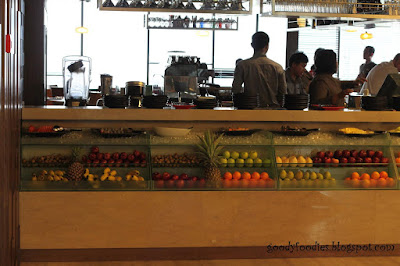Before The Unc left for Melaka, I gave him specific instructions to buy some mille crêpe from Nadeje Patisserie Cafe for me if he had the time. Fortunately for me, him and his mates made a quick detour to Melaka Raya just before they made their way back to KL.
You're coming home with me tonight
Nadeje in Melaka Raya
Mille crêpe, also called thousand layer cake is a French cake made of many crêpe layers. Each cake at Nadeje has around 18 t0 20 layers and everything is made by hand and hand-layered. When The Unc arrived at the shop, he called to ask how many slices of cakes I wanted. Because they would only get back around midnight and the lady in the shop said that the cake would not keep, I just told him to get 1 slice for me to sample.
We went for their bestseller, the Original flavour. The mille crêpe consists of homemade custard cream with Tahitian Vanilla Beans mixed with fresh cream and topped with caramel. Rich in taste and light in texture, I fell in love as soon as I took my first bite. It was smooth, fluffy and absolutely luscious! I regretted immediately not getting a few more slices.
Simply heavenly
My only consolation is that one of their competitors currently supply to several coffee outlets in KL and also deliver to KL addresses.
Opening times: 12pm - 10pm. Closed on Mondays.
Price: RM8.50 per slice.
Location: Nadeje Patisserie Cafe, Taman Melaka Raya, G-23 & 25, Jalan PM 4, Plazza Mahkota,75000 Melaka.
Tel : 06-283 8750
GPS Coordinates: 2.189539, 102.246419
Website: http://www.boom68.com/nadeje/


















































